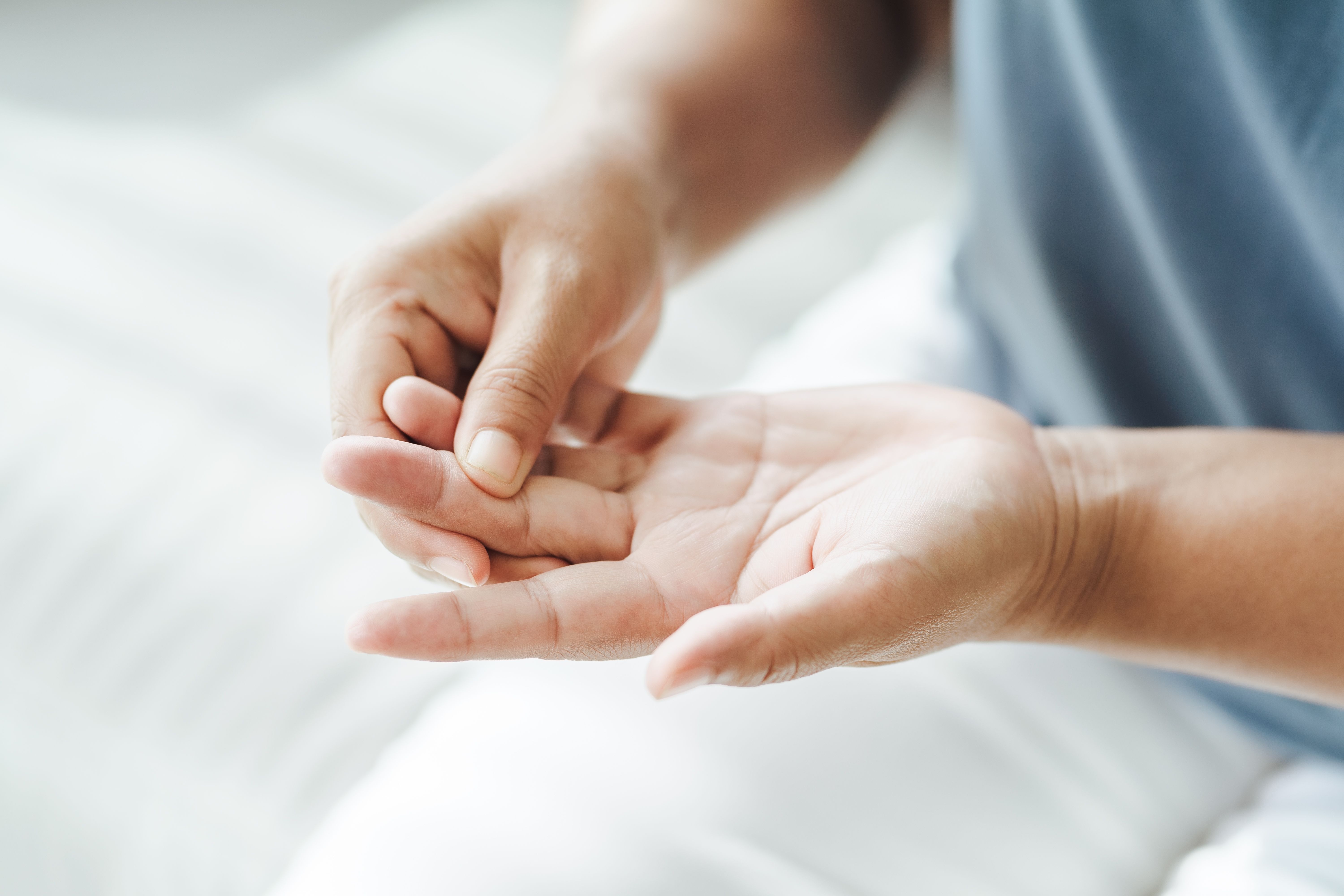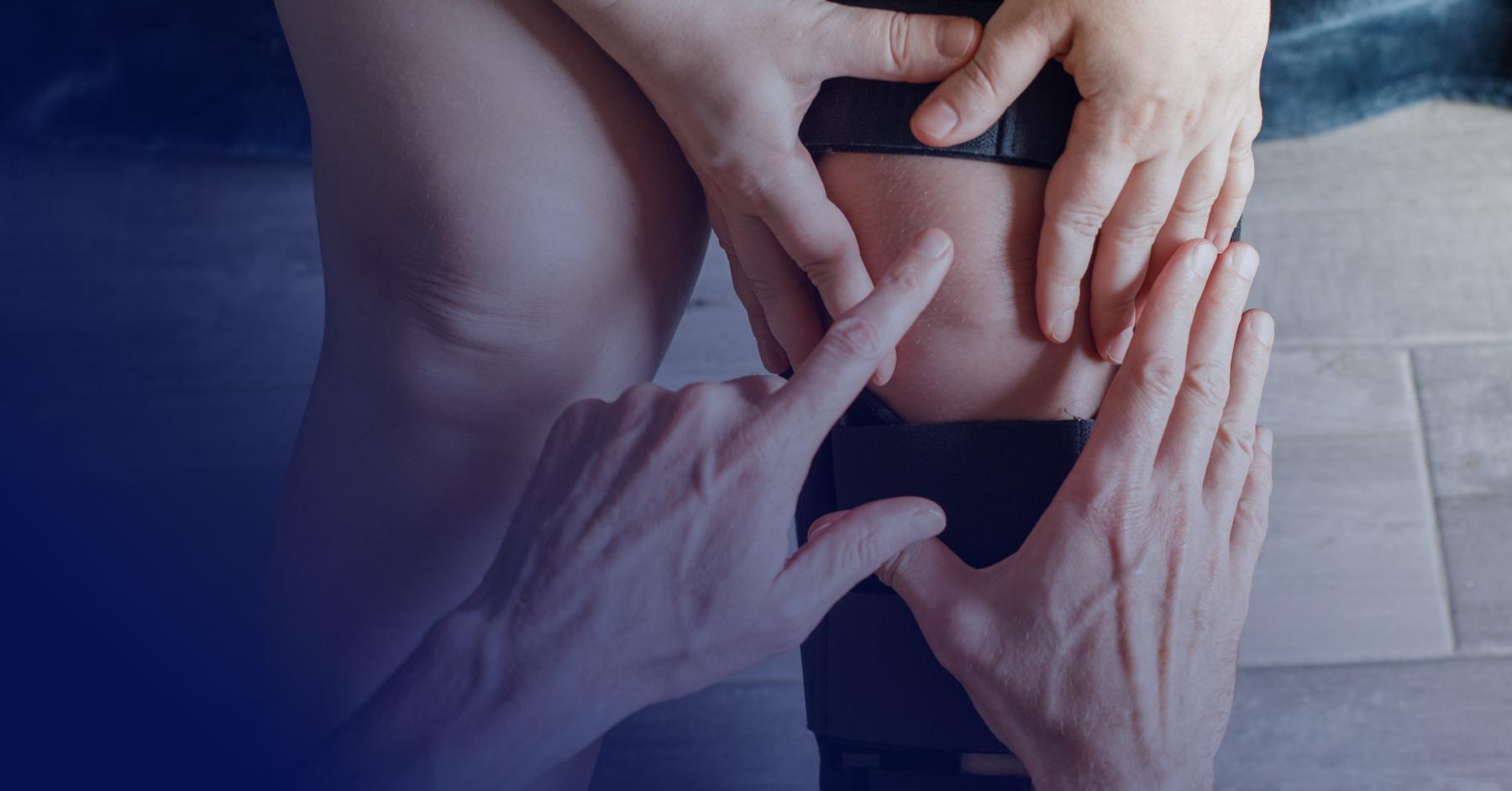What is a Jammed Finger?
Hand Injuries

A jammed finger causes your finger to become stiff and painful. Here’s how you can treat it.
You probably don’t think too often about your fingers and all they do — until they become jammed. Simple tasks like typing, grasping objects, dressing, and eating suddenly become more difficult and extremely painful. While a jammed finger is quite common and usually isn’t a serious orthopedic condition, it doesn’t make dealing with one any easier. Read on to learn more about the condition and how to manage the discomfort and pain.
What is a jammed finger?
A jammed finger refers to an injury to the soft tissues, or ligaments, that hold the bones in the finger joint together. The most common site of the injury is the middle of the finger, or the proximal interphalangeal joint (PIP), where the finger bends in half. The PIP joint is supported by small ligaments known as collateral ligaments, and it’s those that are most likely to be injured.
Catching a high-speed ball is a frequent cause of a jammed finger, but it can also occur when you break a fall with your hand and accidentally stretch or tear the delicate ligaments. When jammed, the finger becomes painful, stiff, and swollen. Often, jammed fingers make it challenging to completely straighten the finger. This type of injury is classified into three categories based on severity:
- Grade I: The ligament has small tears, but the bones are stable.
- Grade II: There is a partial ligament tear, and the bones may move out of place.
- Grade III: The ligament is completely torn, and the bones can move out of their position.
Sometimes, the ligament damage is so severe that the joint becomes dislocated. However, a jammed finger is different from a broken finger. Although the symptoms are similar, a broken finger involves a fracture of a bone in the finger.
Six treatments for a jammed finger

A jammed finger responds well to conservative, at-home therapy. You should feel relief within a week or two. Unless the pain is severe and persists, it will heal on its own with these treatments:
- Rest. Refrain from doing any activity that puts your finger at risk of re-injury.
- Ice therapy. Apply an ice pack to the joint for 15 to 20 minutes. Be sure to wrap the ice in a cloth so it doesn’t touch the skin.
- Tape. To immobilize the joint and allow it to heal, tape the affected finger to the finger next to it. Avoid taping the finger too tightly to the point where it restricts blood flow.
- Elevate your hand. Place your arm in a sling and raise the finger above your heart to help reduce swelling. Prop your hand on a pillow when sleeping.
- Take medications. If the pain is a problem, try taking over-the-counter pain medications.
- Maintain movement. As the finger heals, try to move it as much as possible without causing excessive discomfort. Consult with a physical or occupational therapist for exercises to stretch the ligaments and improve mobility.
If the pain persists beyond two weeks, see a doctor for further evaluation. He or she will review your symptoms and perform a physical exam. Imaging tests may also be ordered. For severe ligament tears, surgery may be required.
A jammed finger left untreated could result in a permanently misaligned digit or possibly arthritis, so treating it quickly will get your finger back in shape to help you do all the things you depend on it for.
Hand your jammed finger to us
At All Sports Physical Therapy, our therapists specialize in helping patients overcome various orthopedic injuries, including jammed fingers. We implement customized treatment plans to help relieve your pain and get you back to doing your job and the activities you enjoy. Contact us today for a consultation.



